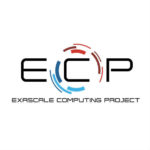This episode of the Let’s Talk Exascale podcast, produced by the U.S. Department of Energy’s Exascale Computing Project, features a discussion between ECP host Scott Gibson and Bronson Messer, who offers insights on computer modeling and simulation for advancing science. Messer is a distinguished scientist and director of science at the Oak Ridge Leadership Computing […]
Search Results for: hpc
Due Credit: Sierra, JADE and HPC’s Role in Livermore’s Fusion Ignition Breakthrough
There’s an unsung hero in Livermore Lab’s announcement this week regarding heroic progress made on fusion energy. It was unsung even by Livermore. It’s HPC. Two supercomputers powered the research of hundreds of scientists at Livermore’s National Nuclear Security Administration facility: — Sierra, the IBM supercomputer installed at NNSA in 2018 and currently ranked number […]
Finnish IT Center CSC (Site of LUMI) and TACC in HPC Collaboration
The CSC – the Finnish IT Center for Science – and the Texas Advanced Computing Center (TACC) at The University of Texas at Austin, have signed a memorandum of understanding to promote research collaboration using high-performance computing (HPC) applications to address global challenges. The organizations said the collaboration focus on joint use of supercomputing resources […]
EuroHPC and Forschungszentrum Jülich in Hosting Agreement for Exascale Supercomputer JUPITER
Jülich / Luxembourg, 14 December 2022 – A hosting agreement has been signed between the European High Performance Computing Joint Undertaking (EuroHPC JU) and the Jülich Supercomputing Centre (JSC) where JUPITER, the first European exascale supercomputer will be located (see earlier JUPITER coverage). JUPITER has been designed to support the development of high-precision models of […]
Former Hyperion HPC Analyst Steve Conway Joins Intersect360 Research
In the potboiler world of HPC industry analyst firms this is a surprising development: Steve Conway, longtime senior member of Hyperion Research, a firm he left last summer to start Conway Communications, has joined Hyperion’s closest rival, Intersect360 Research, led by CEO Addison Snell. Conway, who has been in the HPC industry for 30 years, […]
Deutsche Bank in AI Partnership with NVIDIA: Risk Models, HPC and a 3D Virtual Avatar
Deutsche Bank today announced a multi-year partnership with NVIDIA intended to accelerate the use of artificial intelligence and machine learning in the financial services sector. The goal is to develop regulatory-compliant AI-powered services and support, for example, Deutsche Bank’s cloud transformation strategy by using AI and ML to simplify and accelerate cloud migration decisions. The […]
At SC22: One Stop Systems’ Jim Ison on ‘AI Transportable’ Liquid Cooled HPC at the Edge
One Stop Systems’ veteran Chief Sales and Marketing Officer Jim Ison talked with us at SC22 about OSS’s unque HPC-class hardware that supports “AI Transportable” applications. These are ruggedized AI workloads at the edge — and by edge, OSS means outside of a data center: in a car or truck, a military vehicle, an aircraft […]
SC22: CXL3.0, the Future of HPC Interconnects and Frontier vs. Fugaku
HPC luminary Jack Dongarra’s fascinating comments at SC22 on the low efficiency of leadership-class supercomputers highlighted by the latest High Performance Conjugate Gradients (HPCG) benchmark results will, I believe, influence the next generation of supercomputer architectures to optimize for sparse matrix computations. The upcoming technology that will help address this problem is CXL. Next generation architectures will use CXL3.0 switches to connect processing nodes, pooled memory and I/O resources into very large, coherent fabrics within a rack, and use Ethernet between racks. I call this a “Petalith” architecture (explanation below), and I think CXL will play a significant and growing role in shaping this emerging development in the high performance interconnect space.
AWS Announces Hpc7g EC2 Instance Powered by New Arm-based Graviton3E Chip
At AWS’s re:Invent conference yesterday, Amazon Web Servicesannounced three EC2 instances powered by new Arm-based chips designed by AWS. AWS said its Hpc7g instances on EC2, powered by new AWS Graviton3E chips, offer up to 2x better floating-point performance compared to current generation C6gn instances and up to 20 percent higher performance compared to current […]











